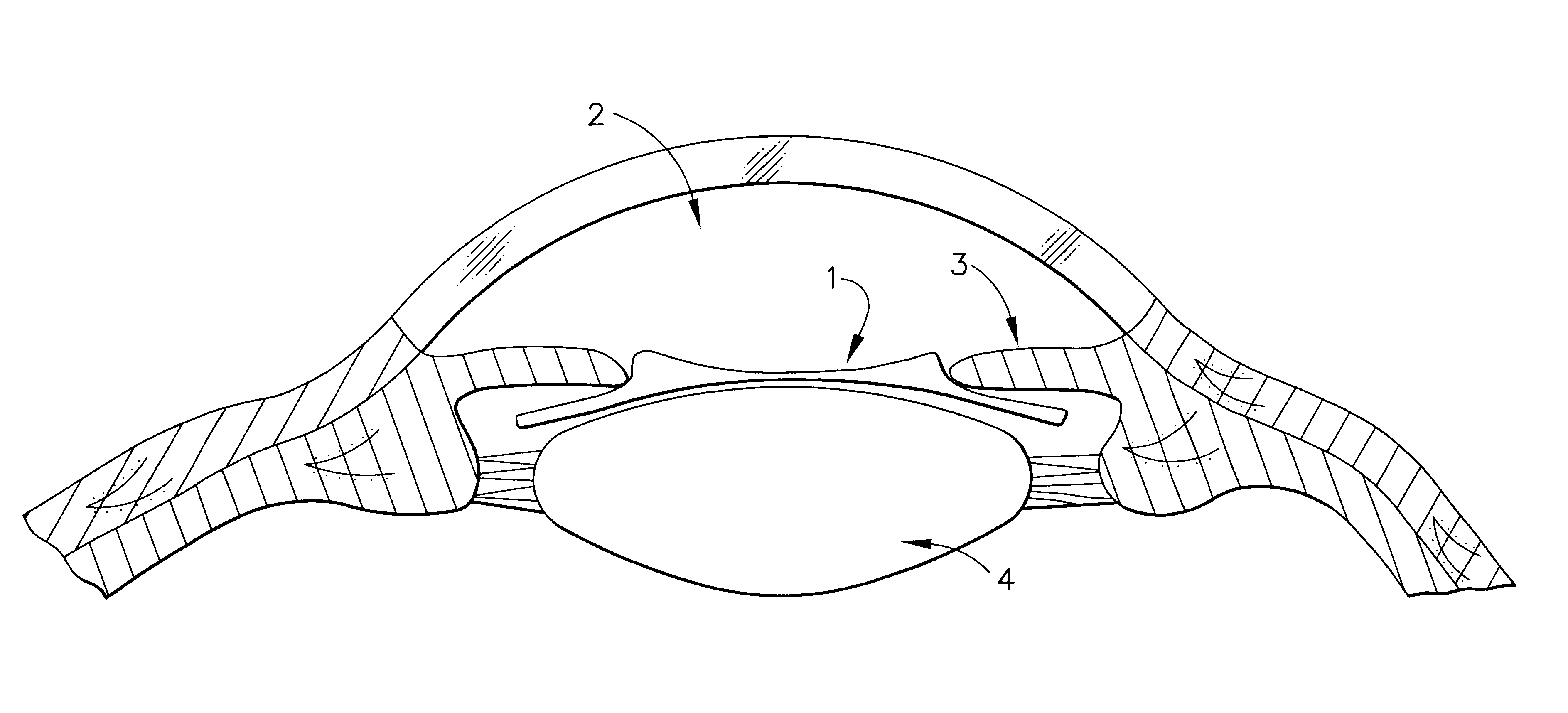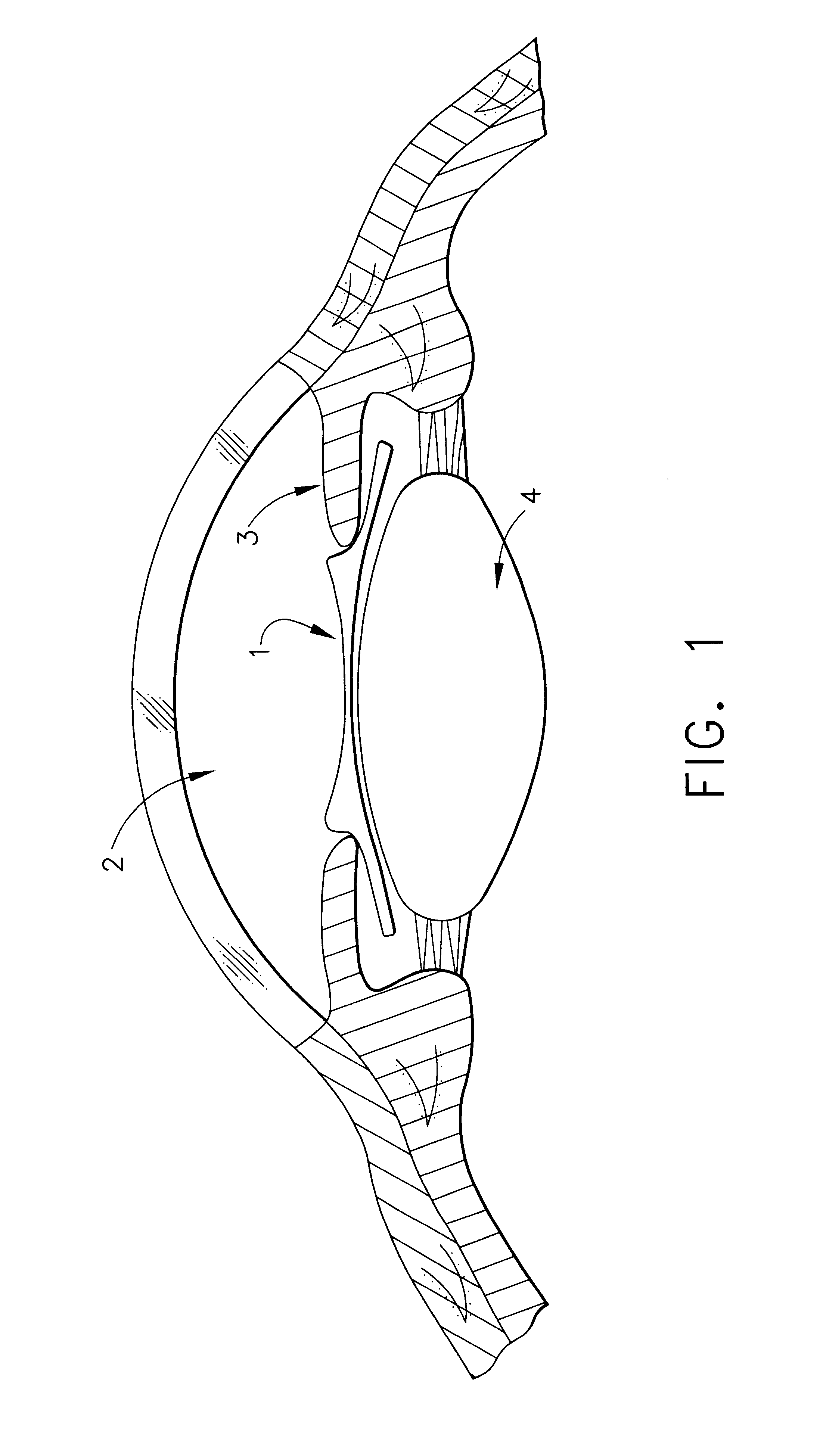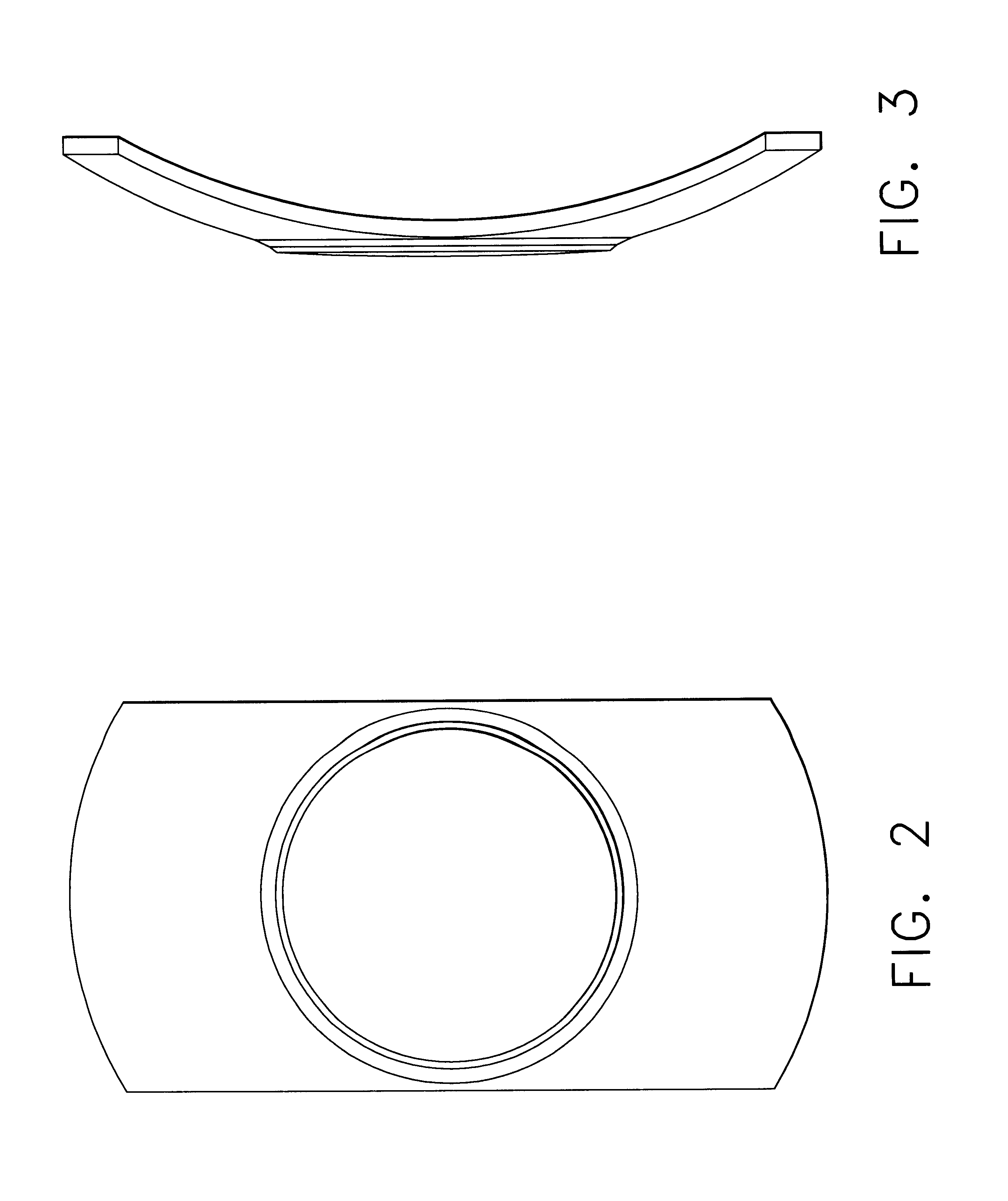Floating phakic refractive lens design for preserving eye dynamics
a technology of phakic refractive lens and dynamic lens, which is applied in the field of posterior chamber prl concept, can solve the problems of reducing the optical performance of phakic lens, patents do not disclose the lens material properties or lens surface properties of such lens designs, and no specific properties of a suitable material, such as mass per unit area or specific gravity, are defined
- Summary
- Abstract
- Description
- Claims
- Application Information
AI Technical Summary
Benefits of technology
Problems solved by technology
Method used
Image
Examples
example 1
Floating Silicone PRL
SIEL 1.46 is a silicone material with a refractive index of 1.46 and specific gravity of 1 (commercially available from SIEL, Ltd. a specialty silicone supplier in Russia). A small amount of the material (Part A: Part B=10:1 by weight) (about 30 mg or less) is placed onto a PRL metal mold. The mold is clamped and placed in a pre-heated oven at 120.degree. C. for 70 minutes. The mold is then cooled down to about room temperature. The mold is opened and the PRL carefully removed from the mold. The PRL has a configuration and dimensions as shown in FIG. 2.
The PRL is placed in deionized water and observed to float on the water surface. A spatula or forceps can be used to gently push the PRL into the water. However, as soon as the pushing force is released, the PRL will float back onto the water surface. Even when the whole PRL is pulled into the water, it comes back on the water surface as soon as the pulling-force is released. The contact angle of the PRL is 80.deg...
example 2
Floating Silicone PRL
A silicone material Med 6820, manufactured by NuSil Silicone Technology, is used to prepare PRLs under the following conditions. Equal amounts of Part A and Part B are mixed for 10 minutes. The mixture is transferred to a syringe and degassed under vacuum until all the visible air bubbles disappear. A very small amount of the mixture is poured into a metal alloy mold and cured at 120.degree. C. for 70 minutes. The PRL is removed from the mold and placed in DI water with its posterior side facing down. The PRL is observed to float on the water surface. When a spatula or forceps is used to gently push the PRL into the water, the PRL floats back onto the water surface as soon as the spatula is removed from the PRL.
Other physical and mechanical properties of the Med 6820 silicone material are as follows: tensile strength=750 psi; elongation=125%; refractive index=1.43; specific gravity=1.05 g / cm.sup.3 at room temperature. The specific gravity measurement is based on...
example 4
Floating Acrylic PRL
A mixture of 15.2 grams of hexylmethacrylate, 4.8 grams of methylmethacrylate, 0.07 gram of ethylene glycol dimethacrylate, and 0.02 gram of benzoyl peroxide is purged with argon and then heated at 100.degree. C. to prepare a viscous syrup. The syrup is still flowable when it is swirled. The syrup is then transferred to a glass lens mold and placed in an oven at 100.degree. C. overnight (approximately 16 hours). The mold is cooled down to room temperature and opened to obtain a positive powered lens.
The configuration of the lens is illustrated in FIG. 4. Its overall diameter is about 10.5 mm and optical diameter is about 5 mm. When the lens is placed in deionized water with the posterior side facing down, it floats on the water surface. The PRL can be forced into the water. However, the PRL can float in water when it is slightly disturbed. The specific gravity of lens material is measured to be 1.09 g / cm.sup.3. The contact angle of this copolymer of hexylmethacry...
PUM
| Property | Measurement | Unit |
|---|---|---|
| specific gravity | aaaaa | aaaaa |
| surface area | aaaaa | aaaaa |
| optical diameter | aaaaa | aaaaa |
Abstract
Description
Claims
Application Information
 Login to View More
Login to View More - R&D
- Intellectual Property
- Life Sciences
- Materials
- Tech Scout
- Unparalleled Data Quality
- Higher Quality Content
- 60% Fewer Hallucinations
Browse by: Latest US Patents, China's latest patents, Technical Efficacy Thesaurus, Application Domain, Technology Topic, Popular Technical Reports.
© 2025 PatSnap. All rights reserved.Legal|Privacy policy|Modern Slavery Act Transparency Statement|Sitemap|About US| Contact US: help@patsnap.com



